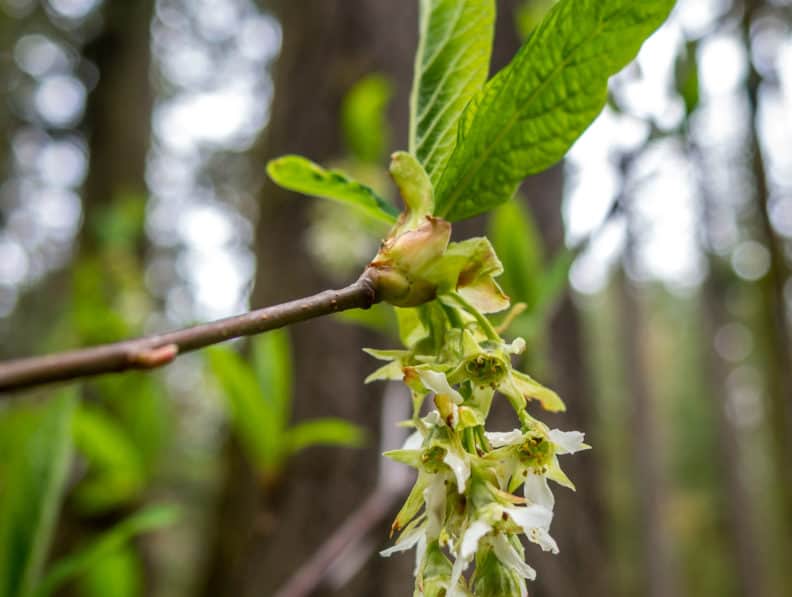
Naturalist Notes: April in the Skagit Valley
One moment it’s sunny and then the next moment it’s raining. And then later in the day, rain is falling on sunshine. That is what spring is like here in the North Cascades. Below are photos and entries from my journal of the last month, documenting the Skagit Valley’s seasonal transition into spring. I hope you find something worthwhile in my daily observations, and have had the chance to get outside and note changes yourself! Enjoy.
April 1st: There has been a notable increase in birdsong around the North Cascades Environmental Learning Center. As I walk around, I see flocks of Varied thrushes (Lxoreus naevius), robins (Turdus migratorius), and Dark-eyed juncos (Junco hyemalis) hopping across trails. The other day, I heard Golden-crowned kinglet song ringing from the tops of evergreen trees by the Peninsula trail, and the cackle of a Northern flicker (Colaptes auratus).
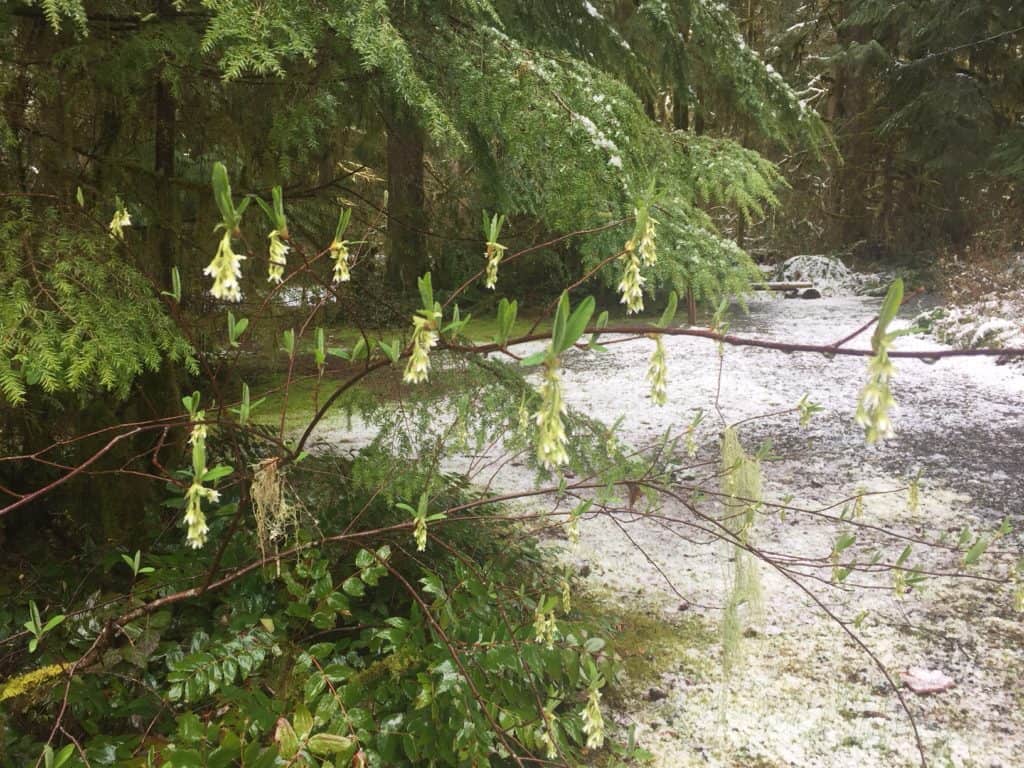
April 2nd: This morning I awoke to unexpected silence in Marblemount. I didn’t hear the usual birds sing, and there was no sound of rain on the metal roof of the cabin. With a cup of hot tea in hand, I peeked out the window and saw fresh snow blanketing the Earth. It was astounding – I had not expected there to be any snowfall overnight! After momentary awe, I worried about the climbing trip I had planned for the day. Friends and I were going to drive down valley to climb at Mt. Erie. Anacortes was predicted to be sunny and 50F – perfect for one’s first outdoor climb of the year!
I hoped for the best despite the weather. It snowed during the drive down to Rockport State Park. When I stepped out of the car, and walked through the groomed fields by the parking lot, I saw Osoberry (Oemleria cerasiformis) in bloom. Its white flowers contradicted, yet resembled, the white mineral covering the ground. I pressed my nose into its pale, crushed up leaves in my palm and inhaled a cucumber fragrance. To me, these flowers – this plant – represents warmer days ahead.
As I continued the drive down Highway 20, Red-winged blackbirds (Agelaius phoeniceus) flitted back and forth across the road, and dark clouds began to part. Soon snow turned into rain, and then rain turned into sunshine around Sedro-Woolley. I looked back on the Cascade foothills to the east to see a veil of grey clouds covering their rounded summits. Towards the Salish Sea, the good ole’ Olympic Rainshadow was in full effect, with sunlight shining down on the prominent hill of Mt. Erie.
I was going to climb afterall.
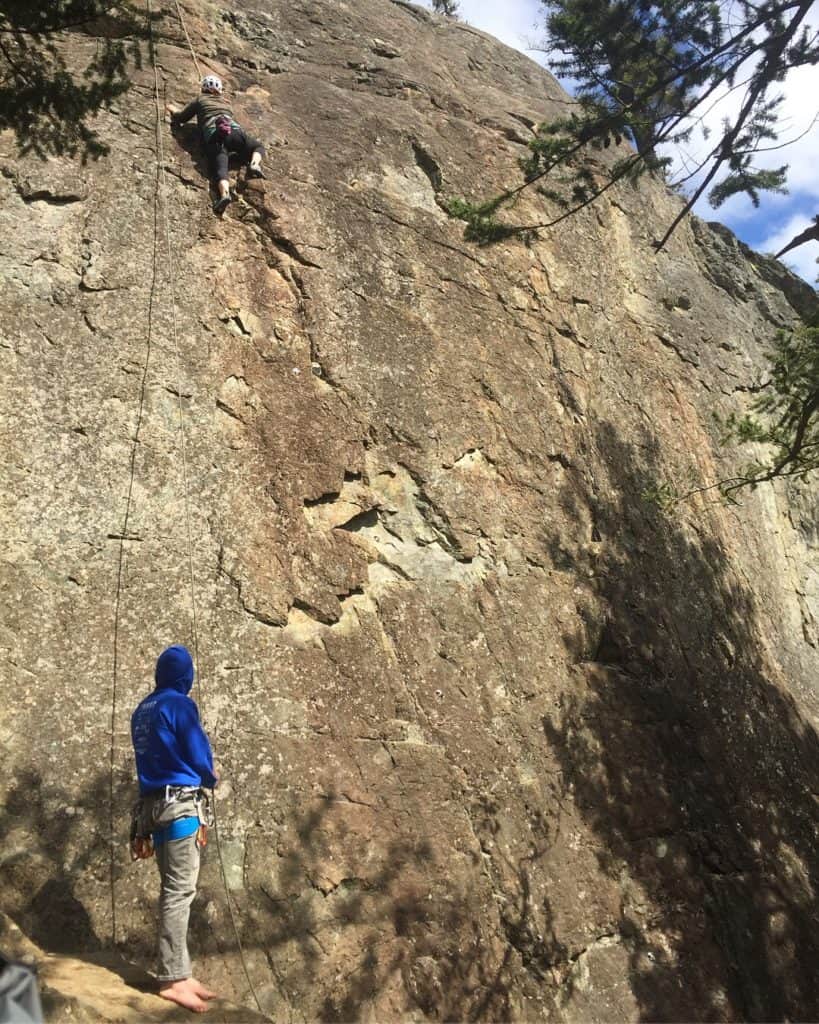

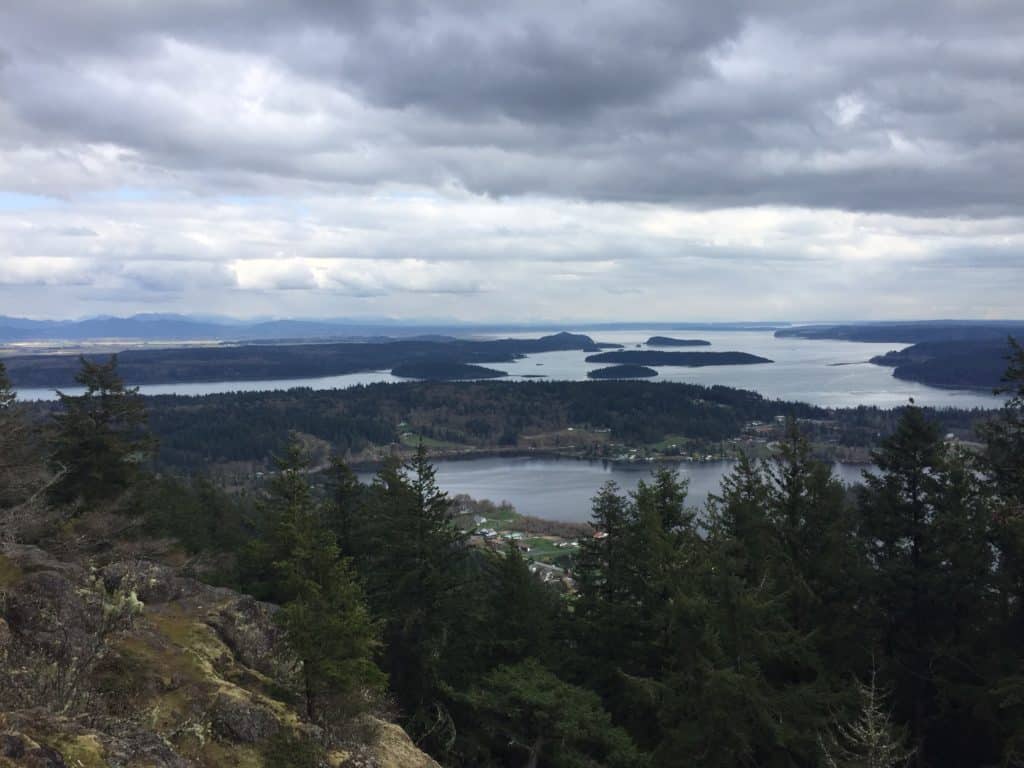
April 3rd: Today I drove over the iconic Deception Pass Bridge and noticed slack tide in the narrow passage below, rather than its infamous 8 knots of current. Later, Gina Roberti and I went for a quick hike in the Goose Rock area. It felt good to stand among familiar trees, and see the mudflats of Cornet Bay at low tide. The smell of saltwater reminded me that April is the beginning of daytime tide pool exploration, rather than nighttime low tides. I miss the stunning, colorful bouquet of marine invertebrates clinging to half-submerged rocks; it is not something you see in the mountains.
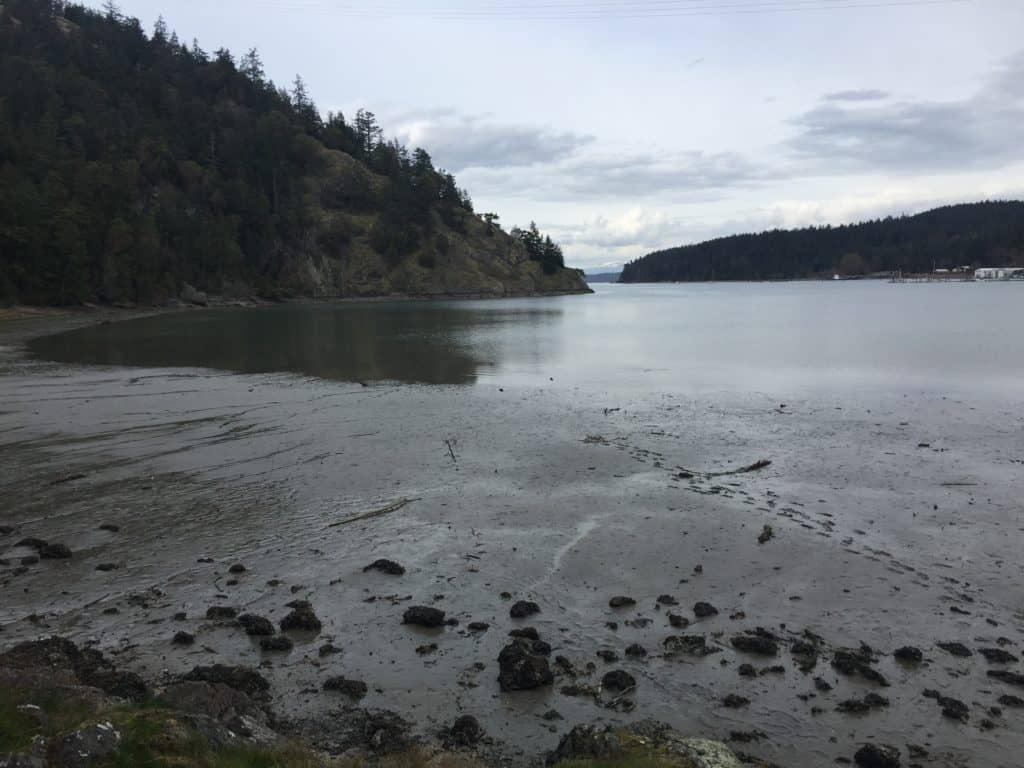
April 9th: This is the first week my Mountain School trail group has complained about the slow, meandering mosquitoes that hover around patches of bare skin. On our dam walk, my Mountain Schoolers also pointed out the sound of a Pacific tree frog (Pseudacris regilla) within the pools of stagnant water below. It’s the first frog chirp I’ve heard this year. And I noticed the crisp white bellies of Violet-green swallows (Tachycineta thalassina) for the first time, too, as they swooped down the dry and steep walls of Diablo Dam.
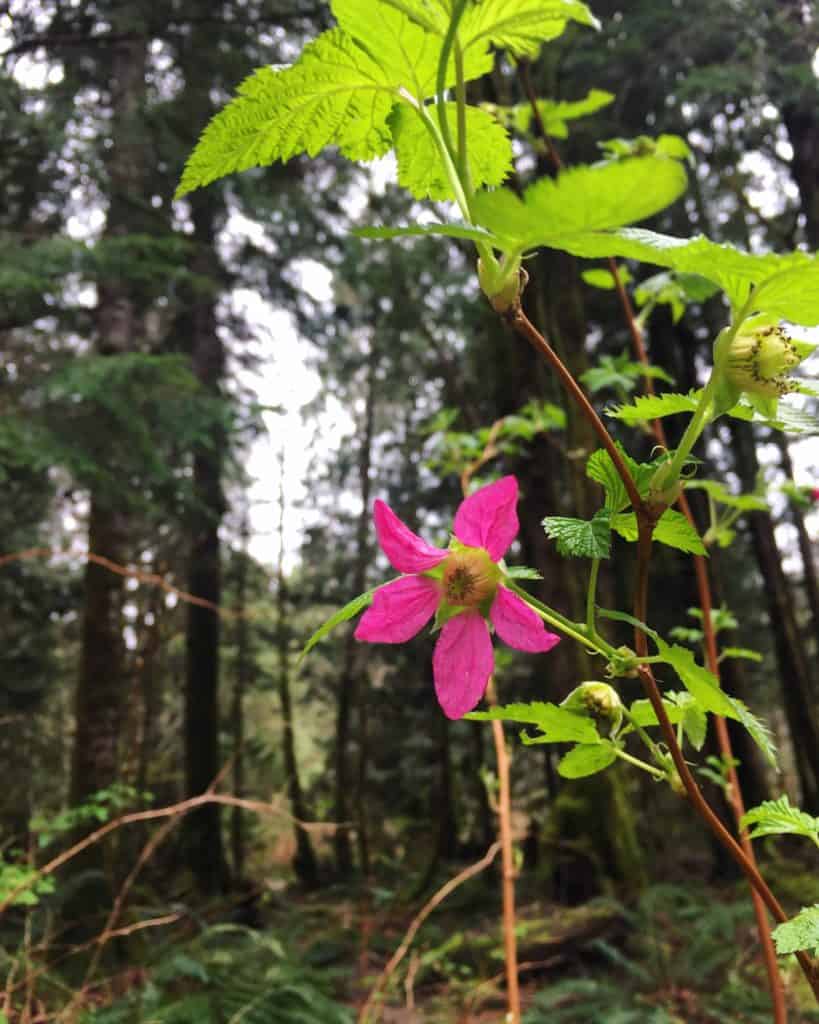
April 11th: A Peregrine falcon (Falco peregrinus) flew overhead as I ran across the dam to Highway 20. While I headed east on the road, I saw the raptor fly in wide circles over Diablo Lake, its long pointed wings beating fast. Next, the bird dove toward the lake’s surface, with wings tucked back, body like a bullet. I couldn’t see its attack due to the trees blocking my vantage, but I did enjoy the show up until that point!
April 12th: Marissa Bluestein and I hiked to the waterfall at the Learning Center simply to see what we could see. Although it was sunny when we began our hike, quickly the rain rolled in and Marissa soon regretted wearing a down vest with no rain jacket. Rookie mistake.
I loved seeing new plants in bloom for the area. It was fun comparing the seasonal progression to Rockport, which seems to be a full two-three weeks ahead of the Diablo Lake area. I guess that’s the difference between a place that is 360 feet above sea level versus 1,201′. I particularly enjoyed seeing curled up ferns and vibrant stonecrop appearing from under melted snow. Today there were still a couple of snow patches within shady spots by the trail.
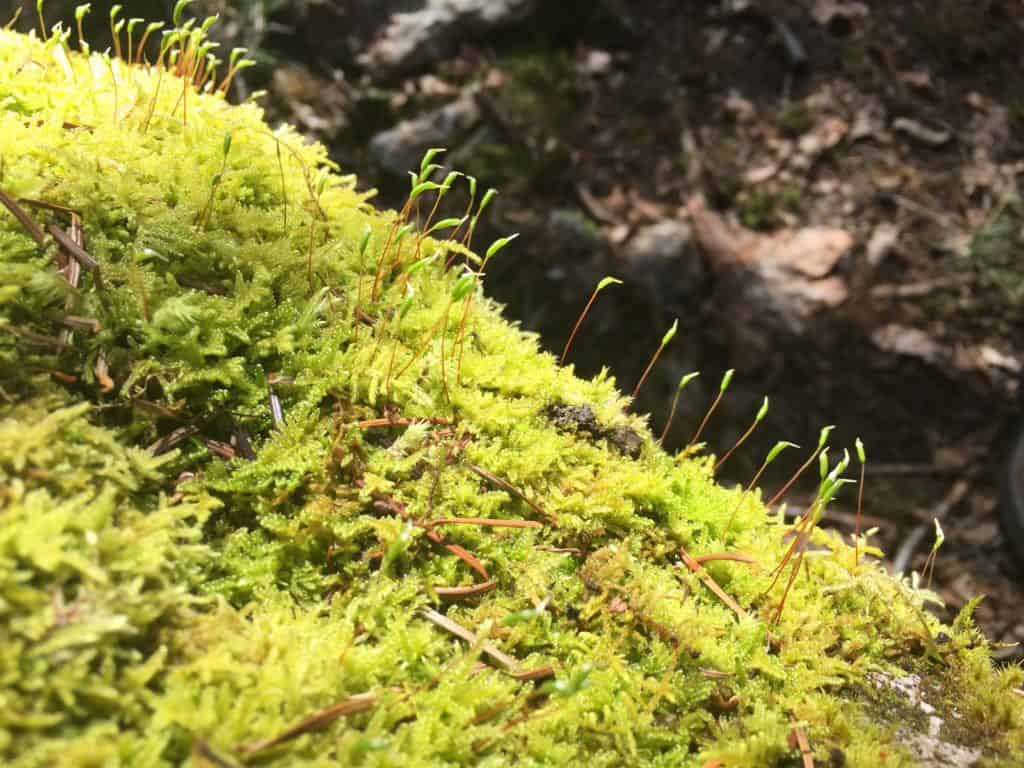
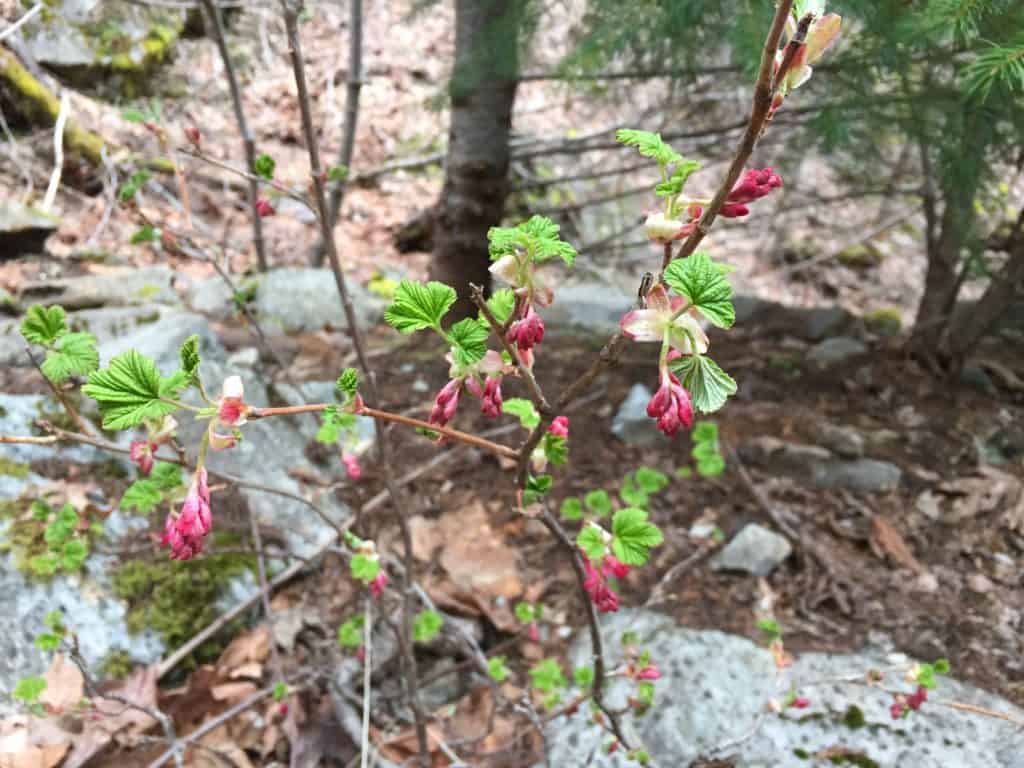

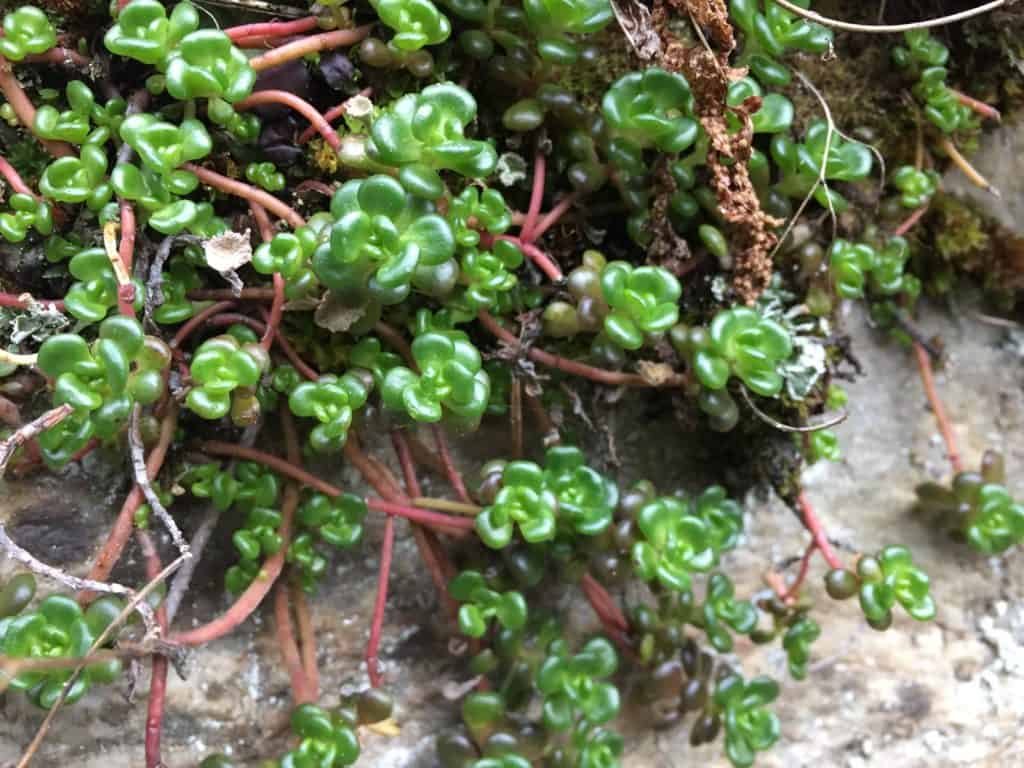
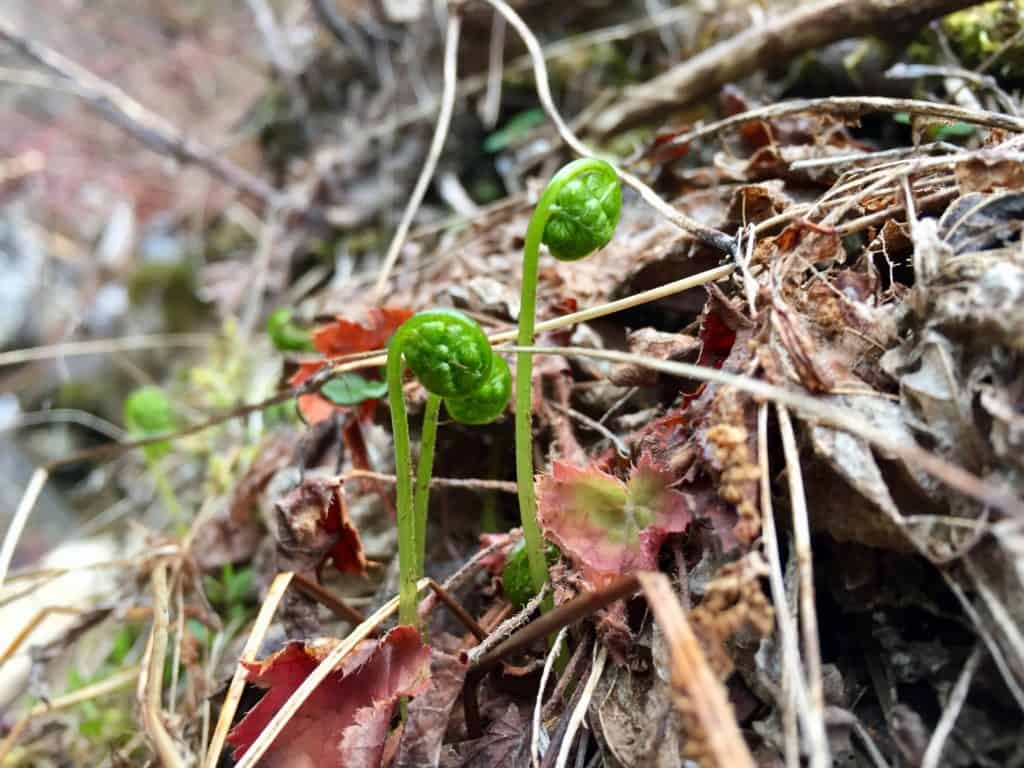
I especially empathised with (and anthropomorphized) the fiddleheads tucked between the cracks of newly exposed talus, that have been buried under snow until very recently. These ferns have endured weeks of a cold blanket atop their rounded backs, feeling the weight of the world above. Finally, sunlight has reached their slope’s tiny corner of the forest, melting away the added pressure. The ferns anxiously begin to unfurl and grow. Now, they yawn from a winter’s slumber, stretch and grow up through layers of detritus and moss. Their future is filled with personal expansion, goal setting, and who knows how tall they may become.
April 13th: There was a splash of red from the underside of five Northern flickers (Colaptes auratus), spotted during a drive down Highway 20, just past Newhalem.
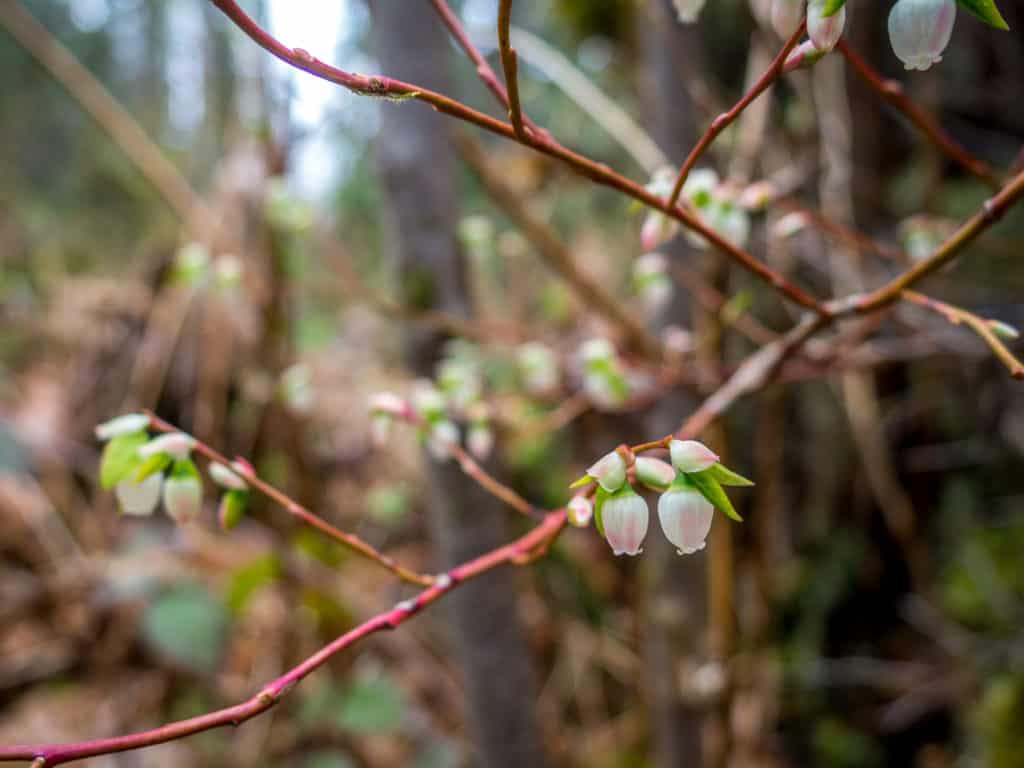
April 14th: Frogs sing their loud chorus outside our cabin in Marblemount. Their cacophony of competing voices is one of my favorite sounds in the world. Add in tree crickets, cicadas and katydids and you have my favorite nighttime symphony, full of feelings from my youth in the humid South. I lay in bed with the nearby window cracked open, listening to the Pacific tree frogs calling to one another, as I drift off to sleep.
April 21st: This evening I attended a Forest Bathing session, derived from the Japanese practice of Shinrin-yoku, at Rockport State Park. It was led by Michael Stein-Ross, a certified forest therapy guide, in celebration of Earth Week.
I appreciated the opportunity to slow down with a group of strangers and take a walk in old growth forest. In about three hours, we covered less than 3/4 of a mile, participating in simple activities to engage the senses, feelings of connection, and mindfulness. Forest bathing is a wellness practice similar to yoga or meditation; I felt very present in my body, and the world around me, within my time in the forest, noticing the phenology and motion of a familiar place.
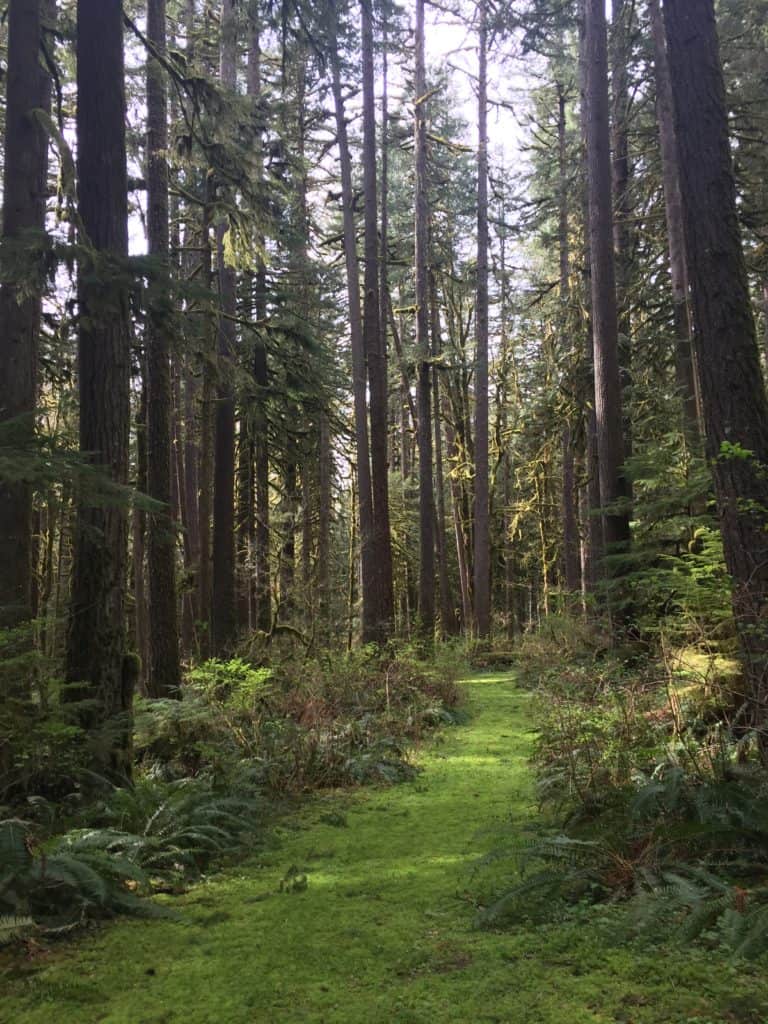
Leaves shook, swayed, waved, bounced, bobbed, flittered and flew within the gentle breeze. Fresh green leaves of huckleberry felt tender, while Vanilla leaf (Achlys triphylla) like the skin of a grape between my fingers. Mature Siberian miner’s-lettuce (Claytonia perfoliata) reminded me of the velvety feeling of a puppy’s ear. The contrast of a tiny spider holding perfectly still within a web that bounced in the breeze is an image that will stick in my brain for a while.

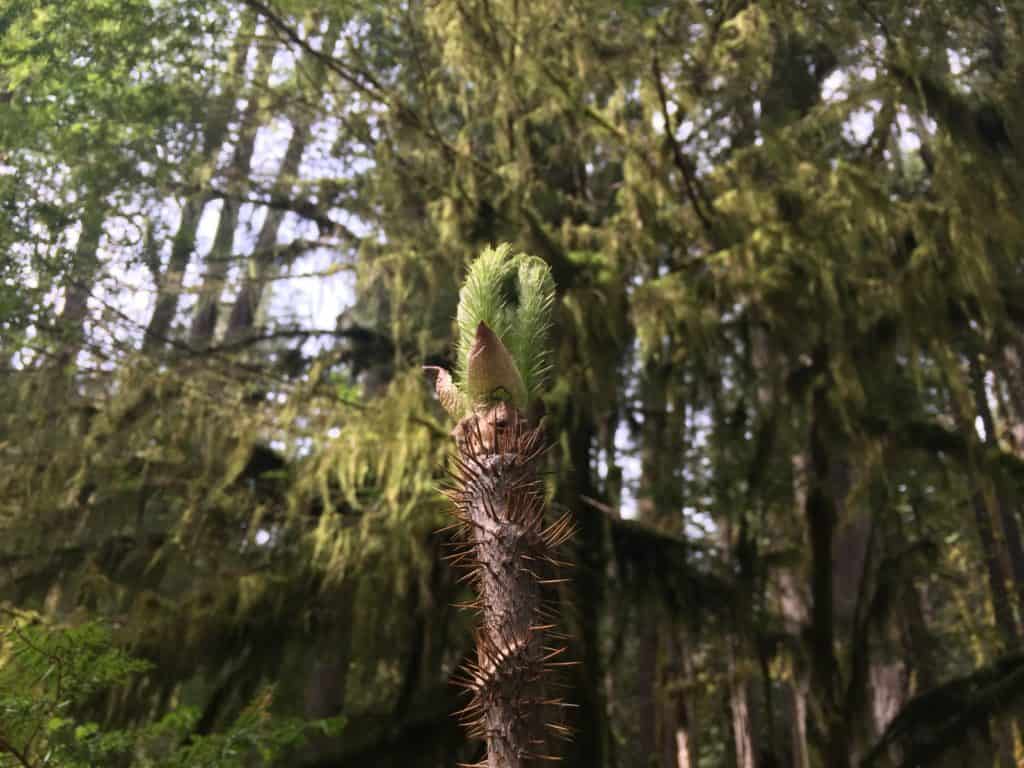
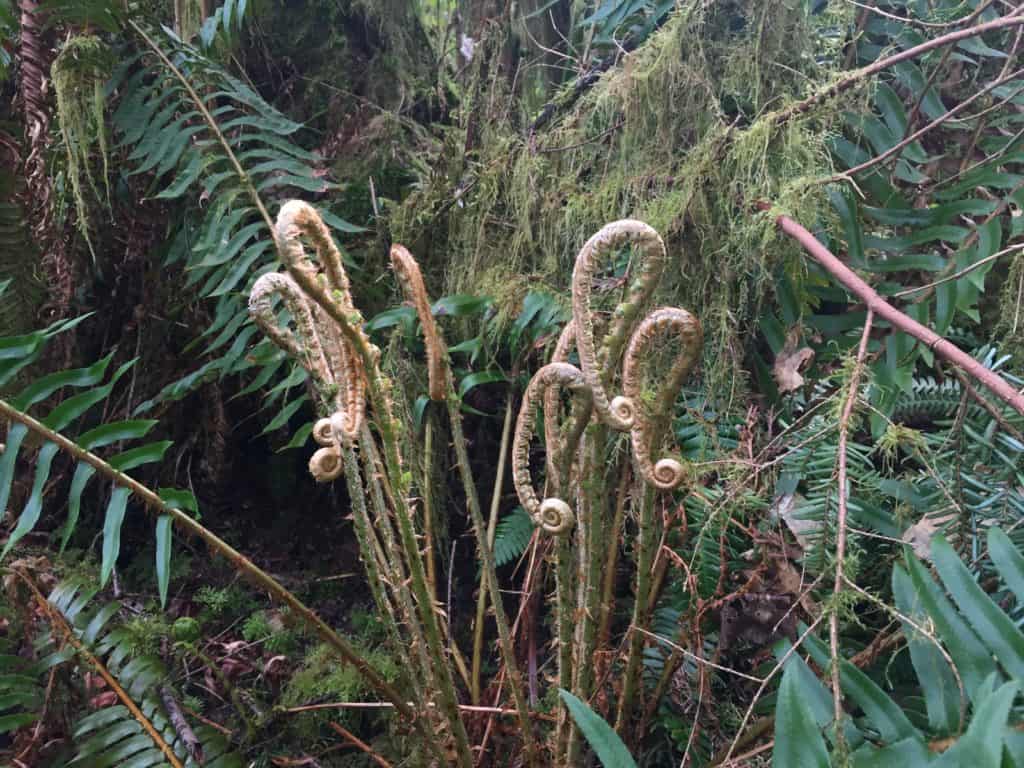
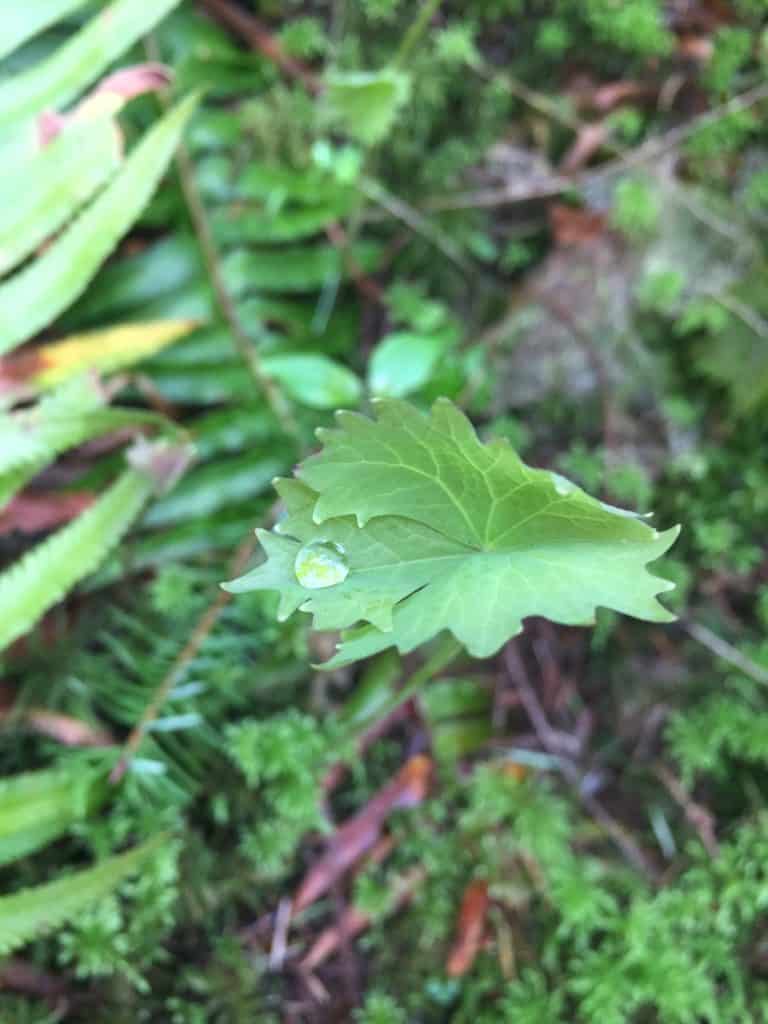

April 22nd: Why not celebrate Earth Day by making some art in the sun, admiring old growth forest? It was lovely to do just that while trying my best to learn how to watercolor from Don Smith, a local artist and Park Aide at Rockport State Park. Don led an informative and fun class on how to paint “en plein air,” which is the French expression for the act of painting outside versus inside a studio.
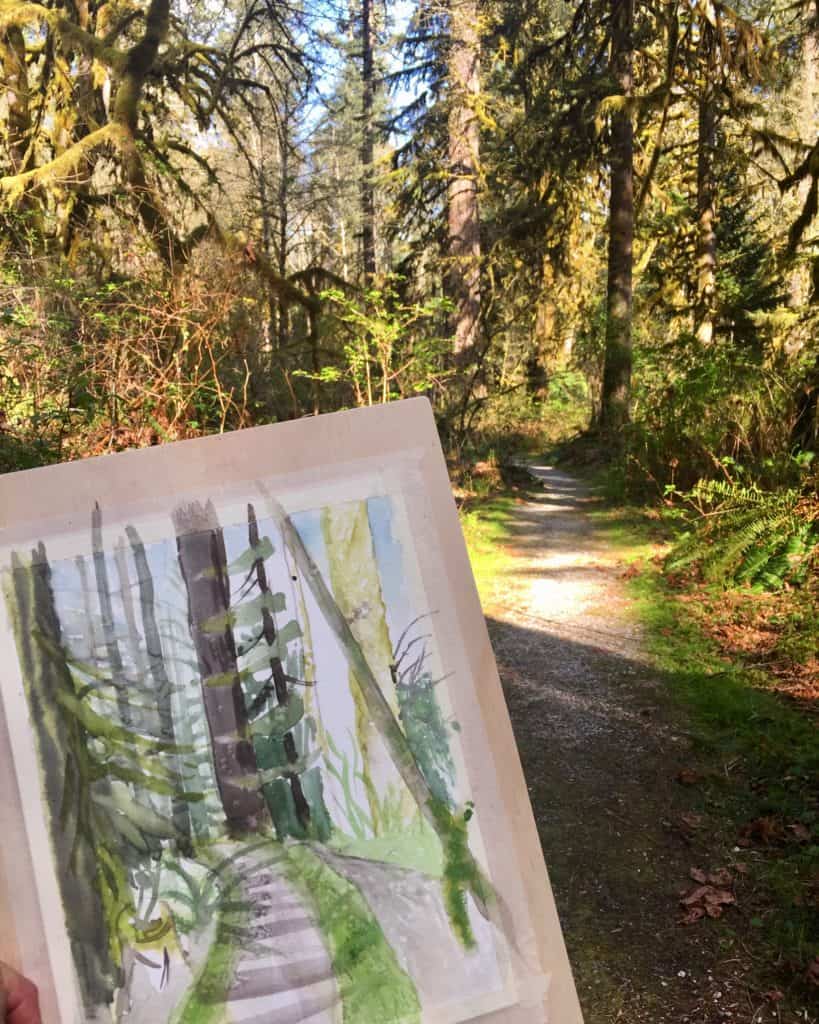
For three hours, I attempted to capture the essence of the complex landscape and lighting before me through simplistic brush strokes; it was a gratifying way to spend the day. I am excited to continue experimenting with how to move pigments on paper using water. Don inspired me with his commentary on the physics of watercolor – the way water moves and why. There is so much to learn! I look forward to bringing paints out into the field in the future, to try and capture my observations of this very fascinating, and oh-so-gorgeous, world.

